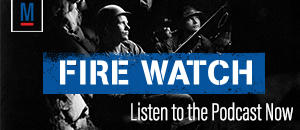ABERDEEN PROVING GROUND, Md. -- One day, Soldiers will get critical repair parts at the point of need through innovative, reliable 3-D printing systems. This vision of the future will lift the logistics burden and lighten the load to provide more capabilities at less cost, according to Army researchers.
"Imagine the possibilities of three-dimensional printed textiles, metals, integrated electronics, biogenetic materials and even food," said Dale A. Ormond, director, U.S. Army Research, Development and Engineering Command. "Army researchers are exploring the frontiers of an exciting technology."
Additive 3-D printing is the process of making something from stock materials, such as metal or plastic powder, by adding material in successive layers. It's also known as additive manufacturing, or AM. In contrast, traditional manufacturing processes often work in the opposite way, by subtracting material through cutting, grinding, milling and other methods.
"One of our biggest challenges in the Army is that there is a huge logistics burden," said Dr. Thomas Russell, director of the U.S. Army Research Laboratory. In the featured interview for the July/August issue of Army Technology Magazine, Russell describes the research vision for 3-D printing.
"I think the number one thing that the Soldier will recognize in the near future is that what we've done in the past is basically hang gear on everything," Russell said. "I think what additive manufacturing will do for us is it will enable true integration into the structures. We'll get beyond this constant evolution where we're just hanging the next sensor or the next GPS device. What we'll do is start to integrate into the structures themselves. There will be a lot less weight, better performance, better characteristics of the materials and it will be more integrated as part of the total kit. I think that's what Soldiers will see in the next 10 to 15 years."
The magazine features articles about how the Army has used forward-deployed 3-D printing labs in Afghanistan. The U.S. Army Rapid Equipping Force, known as REF, found a practical way for deployed units to take advantage of additive manufacturing technology in theater.
"The idea with the labs is that REF brings scientists and engineers to the Soldiers, even those in austere locations," REF Director Steven Sliwa said. "Any Soldier can come to the lab with a problem, and our experts will help them determine a path forward. Perhaps there is piece of kit in the REF inventory that will work; perhaps the lab can design and prototype a solution; or the Soldier may need to submit a 10-liner requirement document so that REF can procure a corresponding off-the-shelf solution."
Requirements drive the Army science and technology community. The U.S. Army Training and Doctrine Command looks to the science and technology community to inform the establishment of requirements. Army acquisition program managers often turn to the RDECOM community and seek help from Army researchers, engineers and scientists to help meet those requirements.
"Future requirements under development at TRADOC may include the capability for a Soldier to download a part file out from a master parts library; print the part; take the part off the machine; put it on a system and accomplish his or her mission," said Andy Davis, Army Manufacturing Technology program manager.
Davis said the Army must focus on technology development and policy advances to achieve its vision.
"The Army will get to a point where it can print and build parts using additive processes that are combined with subtractive processes," Davis said. "Someday that will all be integrated."


























